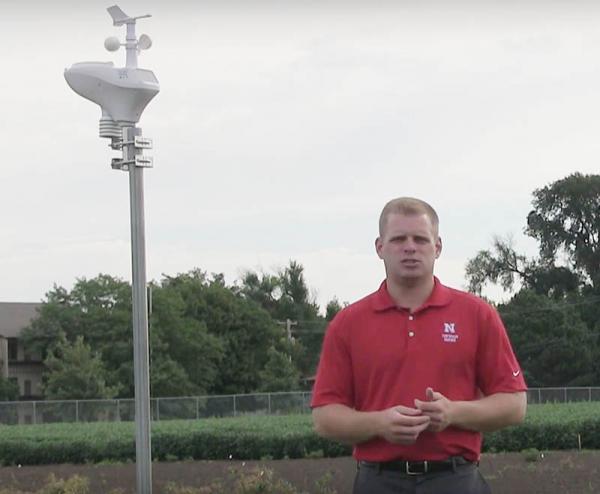When it comes to making sound management decisions, information is everything. That's why University of Nebraska professor Bill Kreuser, Ph.D., can't understand why virtually all superintendents don't have at least one weather station at their golf course.
 Earlier this year, Kreuser conducted an informal poll through his Twitter account that revealed only 45 percent of those responding had an onsite weather station. Even entry-level weather stations designed for personal home use, Kreuser says, can provide superintendents with enough real-time data to make more informed decisions regarding turf management.
Earlier this year, Kreuser conducted an informal poll through his Twitter account that revealed only 45 percent of those responding had an onsite weather station. Even entry-level weather stations designed for personal home use, Kreuser says, can provide superintendents with enough real-time data to make more informed decisions regarding turf management. "As we reduce our budgets, it's easy to think a weather station is too expensive, it's not essential," Kreuser said in video posted to the university's turfgrass management
. "I argue actually it's more essential because now we're making decisions on how we should put down products, how we should manage that grass based on the weather conditions that we have."
Kreuser acquired a mid-range weather station through Weather Underground for use at the university's John Seaton Anderson Turf and Ornamental Research Facility for about $350. Weather stations designed for personal residential use can be purchased for even less.
Weather stations provide real-time data such as temperature, humidity, precipitation, sunlight and more that can be accessed through a computer, tablet or mobile device.
"I can log into my weather station on Weather Underground, and I can see current rainfall rate, how much rain has fallen, how strong the sunlight is, how warm it is, how the wind is blowing."
Kreuser says a handful of weather stations can capture conditions on every square inch of a golf course for peanuts, compared with the savings they will provide.
"Ultimately, I think putting personal weather stations, or a couple of them, on your golf course can be a great way to actually save you money," he said on the video, "because we have information on the conditions that are causing our grass to grow and conditions that may be favorable for disease."
But that's not all. Kreuser also suggested that linking weather stations to his Growing Degree Days model that predicts plant growth regulator application times or the more robust Greenkeeper web-based application, also developed by Kreuser, to make decision-making even easier and a process reinforced by data and science.
The Greenkeeper app includes everything built into the Excel document and more. That app, which can be accessed from a laptop or mobile device, also helps track and schedule pesticide applications and is accessible by multiple users at the same golf course. It also does a lot of the legwork for the user. Kreuser developed the GDD tracker while a graduate student at the University of Wisconsin.
Kreuser suggests buying a weather station that meets each of the three following requirements: measures solar radiation (critical in calculating ET), has accurate sensors and can link to wifi so it can be accessed remotely.

